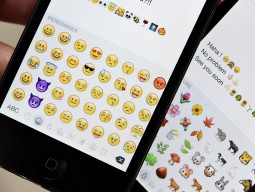
Smiley faces and images of food and cats designed almost 20 years ago by a Japanese phone company and used in digital messages worldwide have now attained the status of art.
The Museum of Modern Art in New York has been licensed to display the emojis in its permanent collection alongside works by Pablo Picasso and Jackson Pollock, it said on Wednesday.
Twitter launches Bigg Boss emoji
It was not clear how the emojis would be displayed at MoMA, but the installation is due to open in early December.
Japanese national carrier Nippon Telegraph and Telephone, or NTT DOCOMO, developed the original set of 176 emojis and released them for cellphones and pagers in 1999.
The 12 x 12 pixel images of hearts, arrows and hand gestures were the blueprint for the emojis widely used today, and they expanded the ways to communicate using the limited screen space available on devices of the time.
Paola Antonelli, a senior curator at MoMA's Department of Architecture and Design, said part of the museum's mission had always been to collect and display timeless art and design.
"Emojis as a concept go back in the centuries, to ideograms, hieroglyphics, and other graphic characters, enabling us to draw this beautiful arch that covers all of human history," Antonelli said in a statement.
This Muslim teen designed the first-ever hijab emoji
The original emojis, designed by developer Shigetaka Kurita, proved very popular in Japan, and the rest of the world soon caught on. By 2006, Alphabet Inc.'s Google was offering emojis for use in its Gmail service, and Apple added them in 2011 to its iOS messaging app.
The emoji display comes six years after MoMA made headlines when it added the @ symbol - used in email addresses and on social media - to its collection, citing its "design power."




















































COMMENTS
Comments are moderated and generally will be posted if they are on-topic and not abusive.
For more information, please see our Comments FAQ